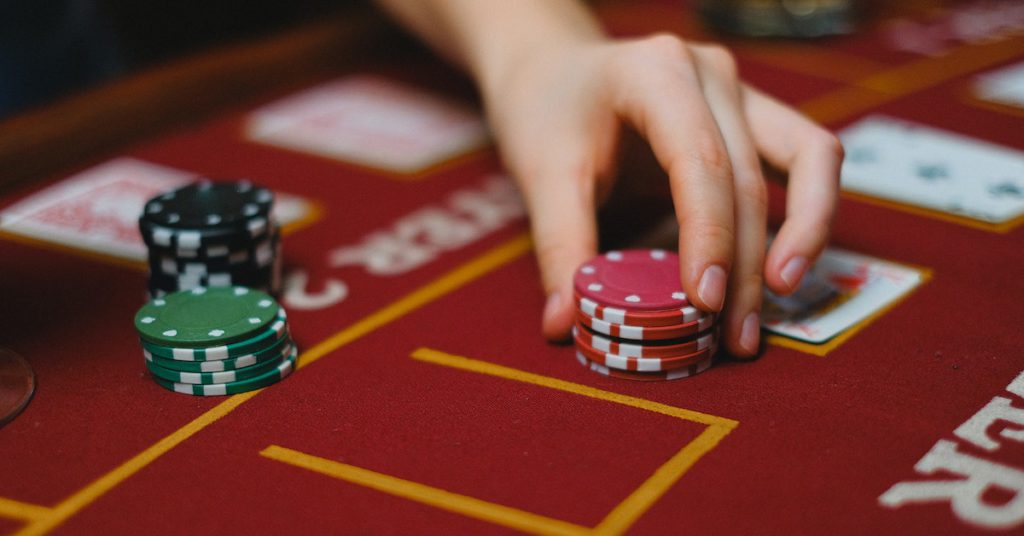Retail investors view the stock market as gambling. This mindset needs to change. Let’s explore the benefits of diversified investing like Ursa. No Ursa account yet? Download Ursa here!
TLDR: Almost shooting “to the moon”, GameStop crashes back to earth after media frenzy. Stock investing may feel like a Casino, but diversified investing is how the House wins.
GameStonks Retro 🎮
ICYMI: Reddit forum r/WallStreetBets created media frenzy around buying heavily-shorted GameStop (GME) and other meme stocks to drive up stock from hedge fund short squeeze.
So what’s happened since? After peaking two weeks ago at $483, GME fell -90% as of this article midday Thursday around $49.
On the way up 📈, the movement succeeded with hedge fund Melvin Capital losing -53% in January from covering.
However, on the way down 📉, retail investors (individuals) bore brunt of losses inspiring new r/GMEBagholdersClub to commiserate. Sure-initial WallStreetBets investors made out well (GME still trading ~20% above $40 pre-frenzy price). Unfortunately, many investors joined the bandwagon at much higher levels. Survey found 28% of US adults bought GME or other meme stocks in January.
So what are our takeaways?
- Increasing retail investor interest is great! 🎉 Retail transaction volume mix doubled in past decade largely driven by market accessibility through new brokerages like Robinhood. GME wasn’t the catalyst but definitely showcases rising influence of retail investors.
- Hope retail investors rebound. 😖 GME fell hard along with many retail investor accounts (just ask r/GMEBagholdersClub). There will be follow-up around manipulation, regulation, etc., but, ultimately, we don’t expect much to change. Unfortunately, the losses will be losses.
- Stock market viewed as a casino. 🎰 Retail investors view investing as gambling. This mindset needs to change. We dive deeper below. 👇
Stock Market is not a Casino 🎰
But aren’t you gambling on stocks? When you gamble in a casino, your expected return is negative. Sure, there is a chance you could win big, but in the long run you’re expected to lose. You’re not investing if your expected return is negative.
Do stocks have a positive expected return? To clarify, not all stocks have positive expected returns. Let’s instead generalize and think about the average stock in the market.
S&P 500 is a market-cap weighted index containing ~500 large US companies with a ~9% annualized return over past 50 years (1971-2020). While historical performance doesn’t guarantee future return, we base the market’s expected return on historical data. This implies that average $ invested in an S&P 500 stock has positive expected return.
So why did people lose on GME? Again, while the average stock may have a positive expected return, that doesn’t mean individually all stocks do. Arguably, GameStop ran past fundamental valuations before the media even got hold of the story. It turned into a momentum trading bubble which is not investing. Another point to remember-investment returns are never guaranteed and there is always the possibility of losses.
But if it is a Casino… be the House 🤑
Again, investing is NOT a casino, but let’s continue with the metaphor… 😁
Invest for Returns
Don’t play bad hands. House wins on positive expected return.
Invest in solid companies with stable business, strong earnings growth, increasing dividends and proven track records. Invest in growing companies with new products, favorable market trends, rapidly growing revenues and paths to strong earnings growth. Invest in companies whose fundamentals could justify a higher price in the long-term.
Diversify Risk
Able to withstand a couple big payouts, House wins on law of averages.
No matter how confident you are in a stock-resist the urge to #YOLOinvest. It’s still an investment and potentially could result in losses. You can’t be right all the time (just be right more than you’re wrong 😝). Diversification allows you to withstand some losses. As a rule of thumb, diversified portfolios have at least 20 positions.
Play Long Game
Not flashy, House wins on consistent incremental gains.
Seeing a stock run up +20% in a day is exciting, but we often fail to recognize the risk involved and biases towards investments that worked. Diversified investing is a great way to build wealth. An initial portfolio of $10,000 compounding at the historical S&P 500 return of 9% could be worth $132,677 in 30 years.
You might be asking why not just invest in market ETFs? We’ll follow up on why we’re firm believers that active investing can outperform the market in our next update.
Ursa is a robo advisor curating an educational and research-driven content experience around personalized diversified active portfolios. Ursa does the research, curates relevant news and automates portfolio tasks empowering you to make stock decisions. No Ursa account yet? Download Ursa here!
As of the publish date of this article, Ursa portfolios do not own GME. This article is the opinion of the author. Anything within this article should NOT be considered an investment recommendation or advice. Past performance is no guarantee of future results. Any historical returns or expected returns are hypothetical and may not reflect actual future performance. Investors should be aware that a loss of investment is possible including the potential loss of all amounts invested. See Ursa’s full disclosures here.
Photo by Anna Shvets from Pexels

